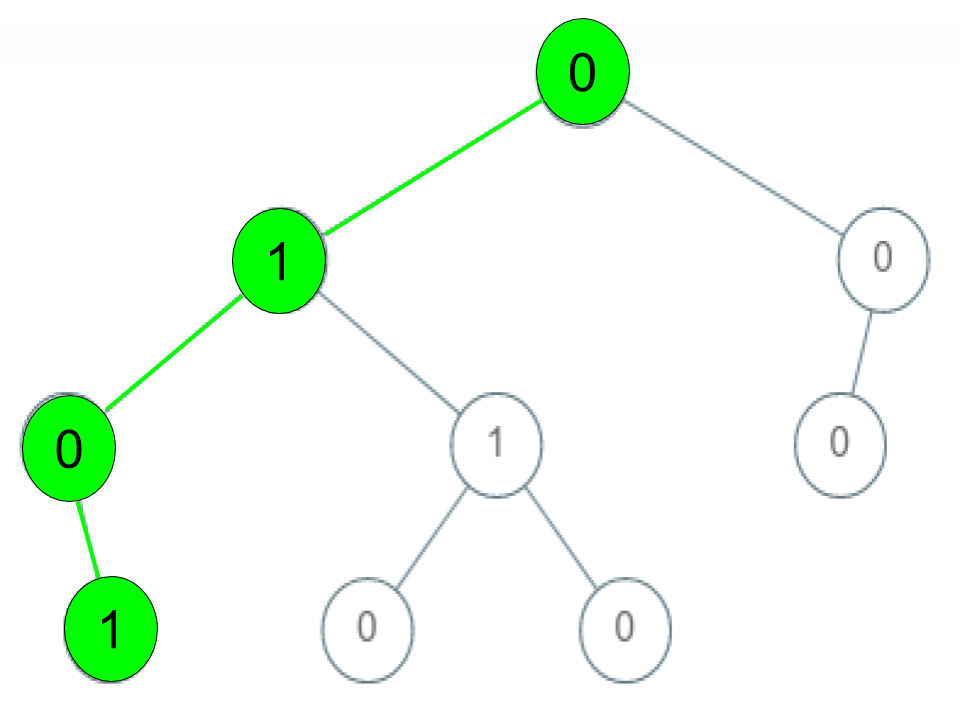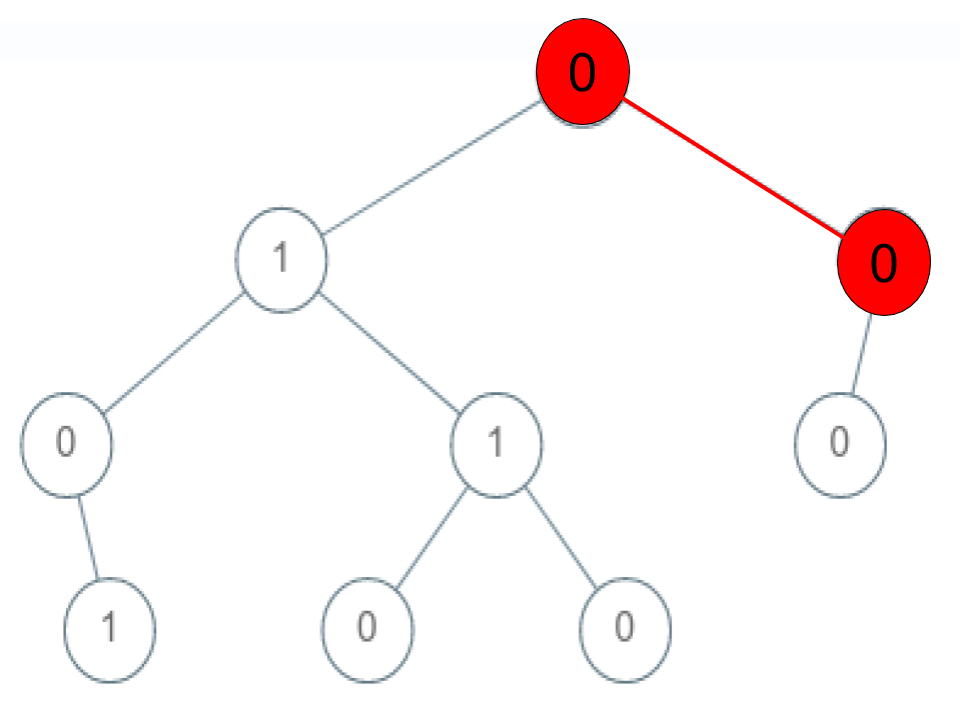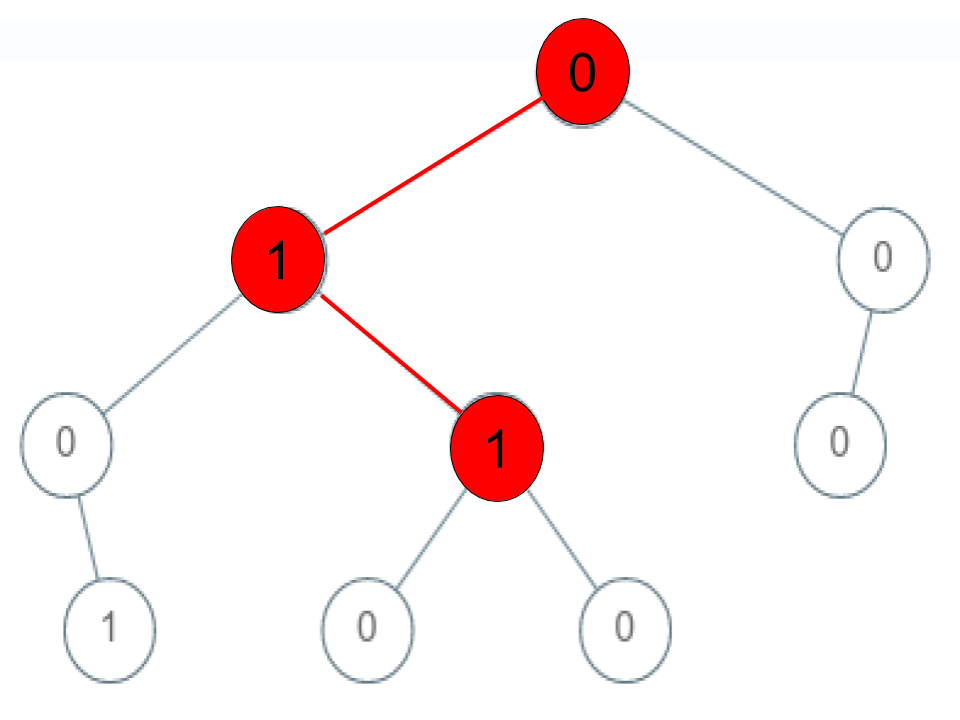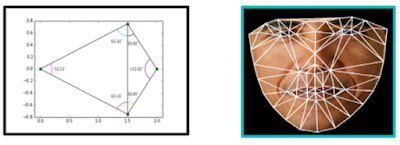30daychallenge (30!) | Check If a String Is a Valid Sequence from Root to Leaves Path in a Binary Tree
Given a binary tree where each path going from the root to any leaf form a valid sequence, check if a given string is a valid sequence in such binary tree.
We get the given string from the concatenation of an array of integers
arr and the concatenation of all values of the nodes along a path results in a sequence in the given binary tree.
Example 1:

Input: root = [0,1,0,0,1,0,null,null,1,0,0], arr = [0,1,0,1] Output: true Explanation: The path 0 -> 1 -> 0 -> 1 is a valid sequence (green color in the figure). Other valid sequences are: 0 -> 1 -> 1 -> 0 0 -> 0 -> 0
Example 2:

Input: root = [0,1,0,0,1,0,null,null,1,0,0], arr = [0,0,1] Output: false Explanation: The path 0 -> 0 -> 1 does not exist, therefore it is not even a sequence.
Example 3:

Input: root = [0,1,0,0,1,0,null,null,1,0,0], arr = [0,1,1] Output: false Explanation: The path 0 -> 1 -> 1 is a sequence, but it is not a valid sequence.
Constraints:
1 <= arr.length <= 50000 <= arr[i] <= 9- Each node's value is between [0 - 9].
Hết rồi. Đây là bài cuối rồi, nay mình sẽ nghĩ xem challenge tiếp theo sẽ là gì. Cảm ơn bạn đã đồng hành. Cảm ơn. Cảm ơn. Cảm ơn !




Đỉnh bạn ê <3
Trả lờiXóa<3 :3
Xóa